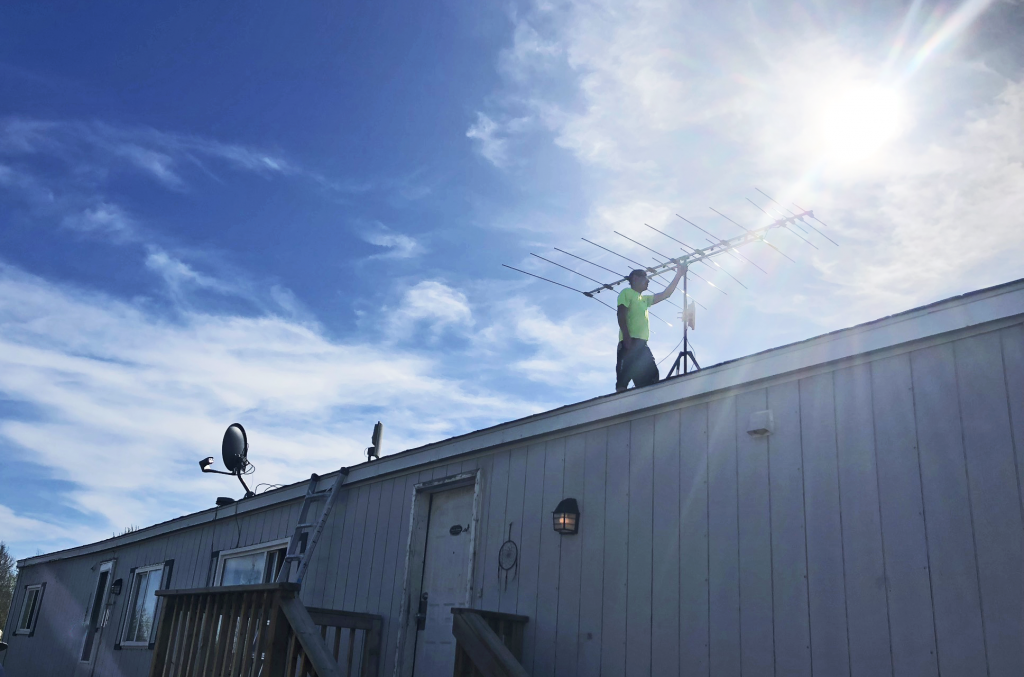Imagine your internet suddenly slows to a crawl—this page takes two minutes to load, YouTube stops working, emails won’t send. Unfortunately, this is an everyday experience for people in rural, remote, and Indigenous communities across the country.
To help improve their situation, many communities have chosen to take internet access into their own hands and—for several of them—CIRA has been there to provide much-needed funding to help them build stronger or more resilient infrastructure.
Last week we unveiled the recipients of this year’s $1.25 million Community Investment Program grants initiative, which featured a number of projects designed to improve connectivity in communities that are lagging behind when it comes to the internet —with a special focus on First Nations. You can find the full list of recipients here.
One of those projects is set to take place in Maskwacis, Alberta, just a short drive from Edmonton. A local, First Nations-led, not-for-profit called the Mamawapowin Technology Society is extending the do-it-yourself broadband network they built in the Samson Cree Nation several years ago to the nearby Ermineskin Cree Nation to provide locals with access to high-speed internet.
CIRA provided a grant to the organization in 2019, which helped them upgrade connectivity in the Samson Cree Nation. Now they’re expanding the project to another part of their community that has been overlooked by Canada’s large telecommunications providers.
By extending their network to nearby Ermineskin Cree Nation, residents there will have access to new affordable internet options. The Mamawapowin Technology Society will also leverage the funding to provide locals with career and job training opportunities.
Derrick Houle, executive director of the Mamawapowin Technology Society, is optimistic about what this project means for Maskwacis. “For years we have had a dream and a desire to improve our nation’s connectivity, [and] we look forward to presenting them with new opportunities that otherwise wouldn’t have been available.” CIRA is proud to support this project and is eager to see the results.

Maskwacis is far from alone when it comes to connectivity challenges. Canada still faces a massive digital divide. Right now less than half of rural households have access to what the federal communications regulator, the Canadian Radio-television and Telecommunications Commission, has deemed “basic” speeds of 50 megabits per second (Mbps) download and 10 Mbps upload. And data from our own Internet Performance Test shows that rural internet users have to put up with inferior speeds that are often 5 to 10 times slower than their urban counterparts.
In response, the federal government has pledged billions of dollars to connect one-hundred per cent of Canadians to high-speed internet by 2030, but for those stuck with slow, outdated connections, 2030 can’t come fast enough.
In the meantime, funding provided through initiatives such as CIRA’s Community Investment Program fills an important gap for community-led projects to improve internet connectivity.
As I mentioned above, this past granting cycle CIRA saw a groundswell of applications from Indigenous communities, and, as a result, a majority of the projects that CIRA funded ended up benefitting them.
We also saw an unusually high number of applications for infrastructure funding, which is unsurprising given how central internet access has been during the pandemic, and how this reliance on connectivity has shone a light on the digital divide.
An unfortunate fact about Canada is that there are very limited resources for community-led projects like the Mamawapowin Technology Society’s.
In October of 2020, we released a first-of-its-kind report called Unconnected: Funding Shortfalls, Policy Imbalances and How They Are Contributing to Canada’s Digital Underdevelopment that identified massive funding gaps facing community organizations working to improve internet access across Canada.
While the government works to achieve universal connectivity by 2030, CIRA is proud to help fill in the gaps through our annual granting initiative, and we encourage philanthropists and funders of all types to join us in supporting this vitally important work.
Maureen James manages CIRA’s Community Investment Program. Her background is in fundraising, grantmaking and strategy development with non-profits internationally and here in Canada.





